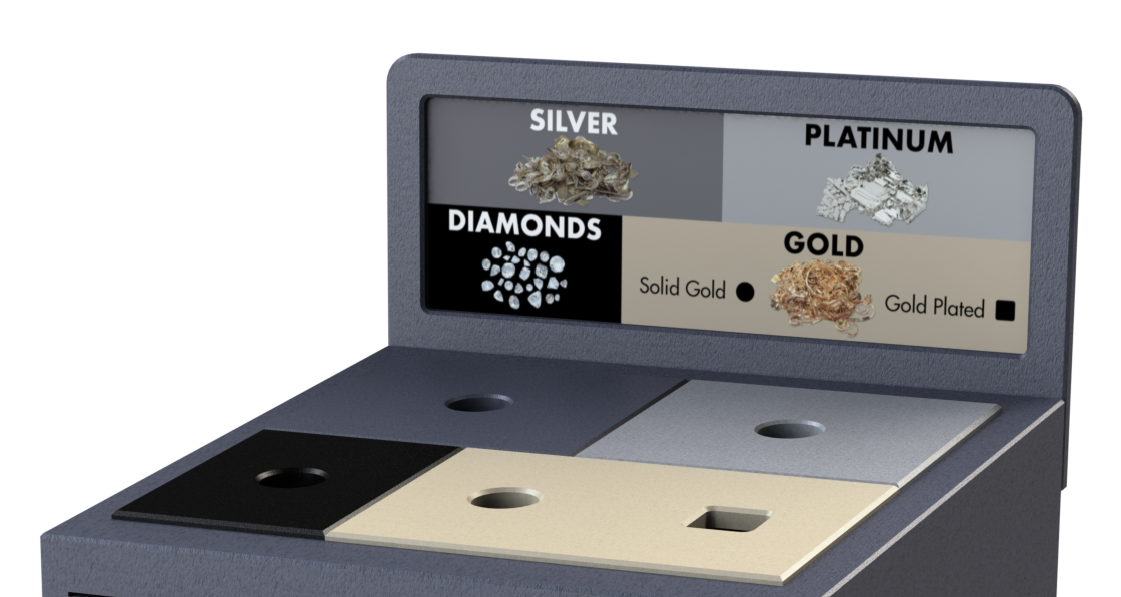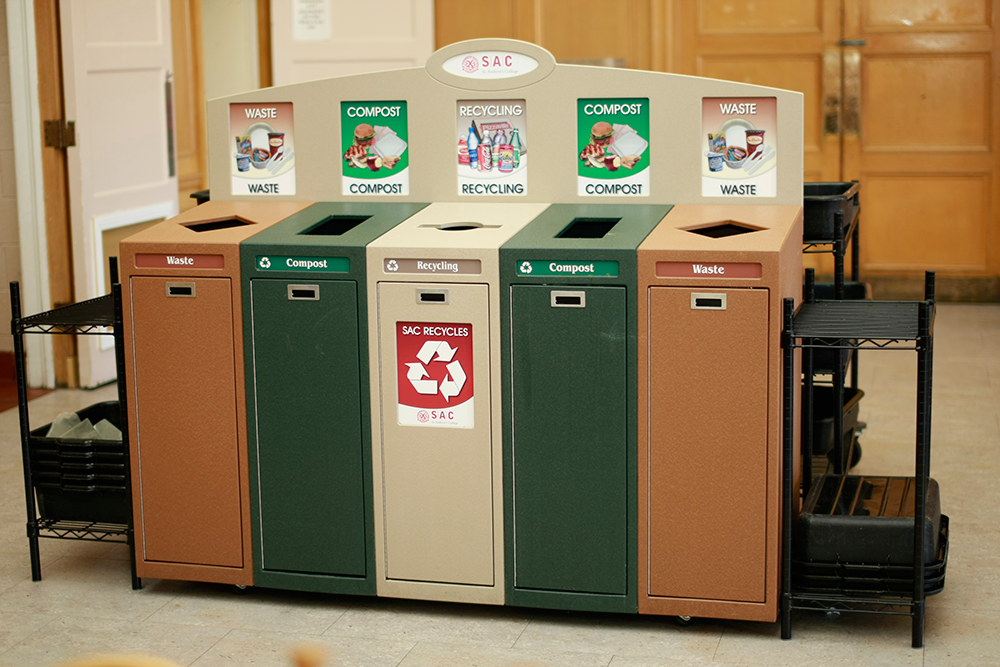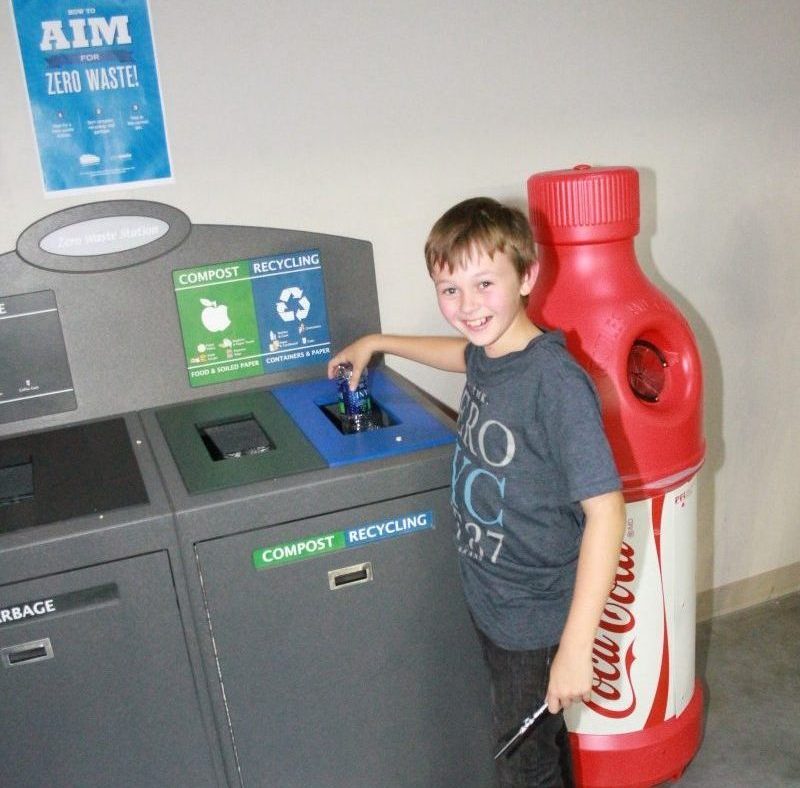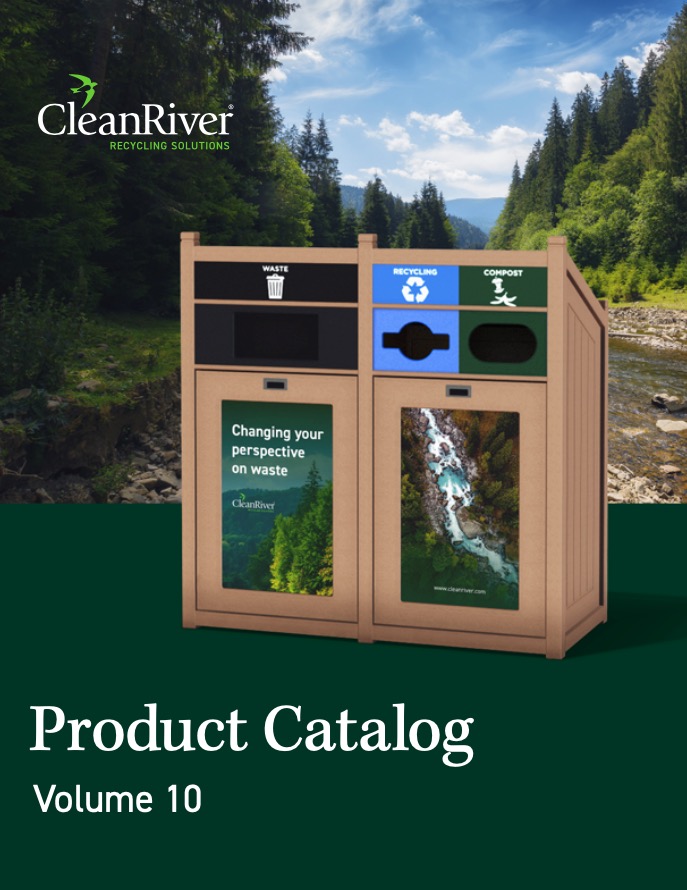Share
The CleanRiver 3C process is vital for recycling program success and consists of Culture, Communication and Collection.
To have an effective recycling program it’s critical that you determine your facility’s collection requirements by following these 5 simple steps:
1. Define your collection goals
Talk to your waste hauler to find out what they will collect. When you have this information you’ll be able to specify which streams you’re going to collect in your recycling program.
Advances in sorting technology at Material Recovery Facilities (MRFs) has meant that many waste haulers are now able to collect all recyclables together which is commonly referred to as single stream or commingled recycling. Collecting all your recyclables in one stream can increase program participation as it makes it easier for people to discard their waste into the right stream. Remember to communicate your commingled recycling to your employees and customers to avoid the misconception of greenwashing, which is where companies claim to be participating in sustainable activities but in fact are not. There have been many cases of restaurants and universities being “called out” on social media for greenwashing when in fact their recyclables were being sorted at the MRF. Once those negative comments go viral though it’s hard to change public opinion.
2. Identify your unique requirements
Some organizations have unique recyclable waste which requires specialized collection. This could include sharp edges, high-value items, fragility or liquids. Rodents and other pests are also a factor to consider when determining your collection container requirements.

Richemont, an international jewelry manufacturer, were looking to collect their high-value precious metal and gemstone scrap material. Security was critical to prevent theft of these items. CleanRiver worked with Richemont to design a bin that was both secure and practical, with clear graphics to let the employees know how to correctly sort the scrap materials.
3. Determine bin location
Look at where waste is generated in your facility and what type of waste is generated. A school, for example, will generate more recyclable and compostable waste in the cafeteria than in the classrooms. In office environments, recyclable paper is most common near workstations, and organic waste is generated in meeting rooms and break areas. When you have a good idea of the waste flow in your facility it will help you determine the optimal placement of bins.
Your front-of-house (public areas for customers and reception areas) and back-of-house (kitchens, meeting rooms and external collection areas) will require different types of collection receptacles. It’s important to note that both areas must be supporting each other by collecting the same streams.
4. One-stop collection
 Recycling and waste should ideally be collected in one unit. The issue with having separate waste and recycling containers is that they can become physically separated. For example, during facility cleaning bins become separated and people don’t have the choice of where to throw away their garbage so they often toss it into the closest bin. This causes contamination in your recycling and waste streams which is detrimental to your sustainability goals because contaminated recycling will often end up being sent to landfill rather than be sorted.
Recycling and waste should ideally be collected in one unit. The issue with having separate waste and recycling containers is that they can become physically separated. For example, during facility cleaning bins become separated and people don’t have the choice of where to throw away their garbage so they often toss it into the closest bin. This causes contamination in your recycling and waste streams which is detrimental to your sustainability goals because contaminated recycling will often end up being sent to landfill rather than be sorted.
5. Protect your investment, future-proof your containers
Your containers should have the capability of adapting to changing stream requirements which protects your initial recycling program investment. You don’t want to be purchasing new containers every time your streams change.
[video_wrap][/video_wrap]
(Click here to learn more about Transition Recycling)
In Metro Vancouver, for example, all commercial and residential properties are now required to separate their organic waste from landfill waste. Having different containers for each stream is a bad idea because they become separated, and then people toss their waste in the nearest bin not necessarily the correct bin.

For their zero waste program the Langley Events Centre, British Columbia, used thirty-six Transition™ containers throughout their facility. The program achieved a 63% reduction in landfill waste and cut their waste hauling fees in half.
When the LEC wanted to change the number of streams they collected in their zero waste program it was easy. They simply removed one of the dividers and contacted CleanRiver to order replacement graphics for the zero waste stations to inform customers of the new stream collection. It was quick and simple and required no additional program investment.
Follow these 5 easy steps to determine what you need to collect in your facility and how you need to collect it. By integrating Collection with Culture and Communication from the CleanRiver 3C process, you will have a best in class recycling program that diverts more waste from landfill and generates a social and financial return on investment.
Contact us today to determine the right recycling containers for your facility at 1-888-646-4246 or email solutions@cleanriver.com


